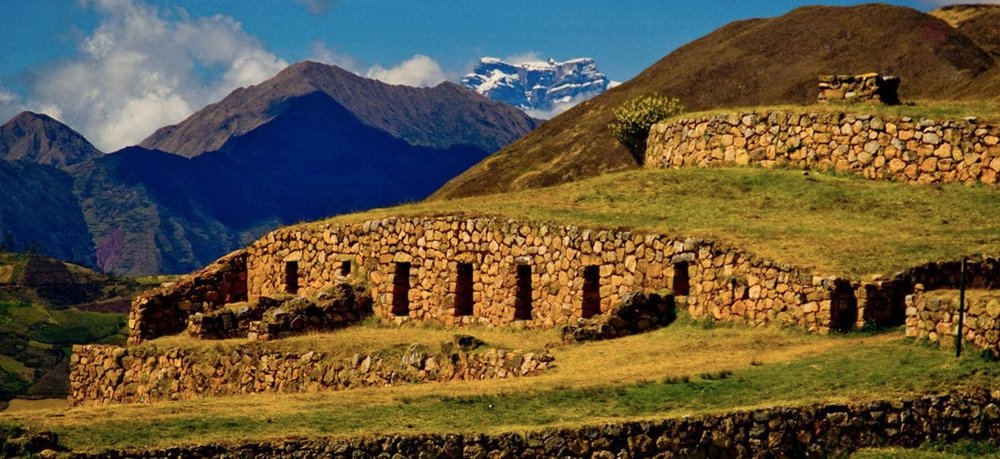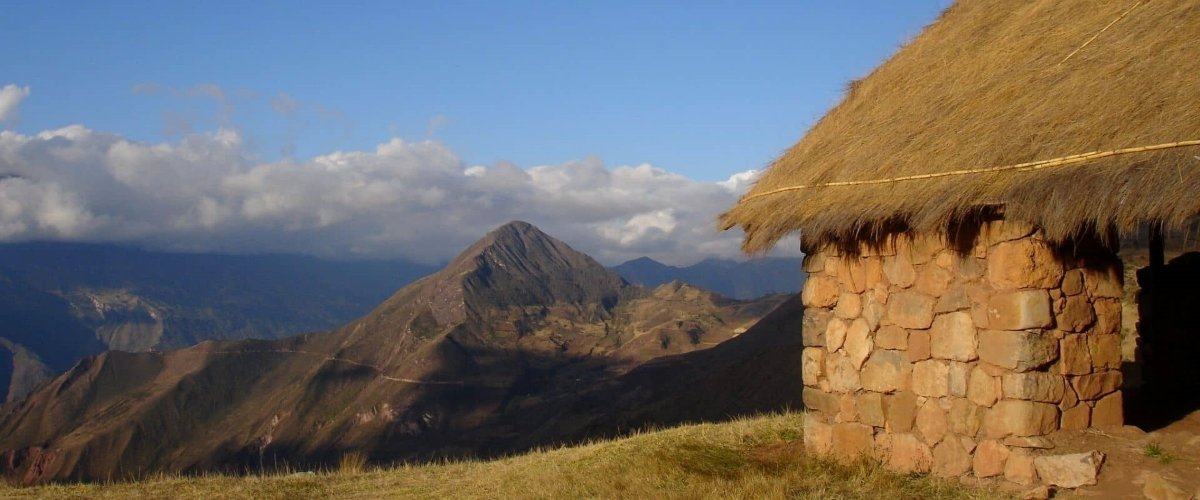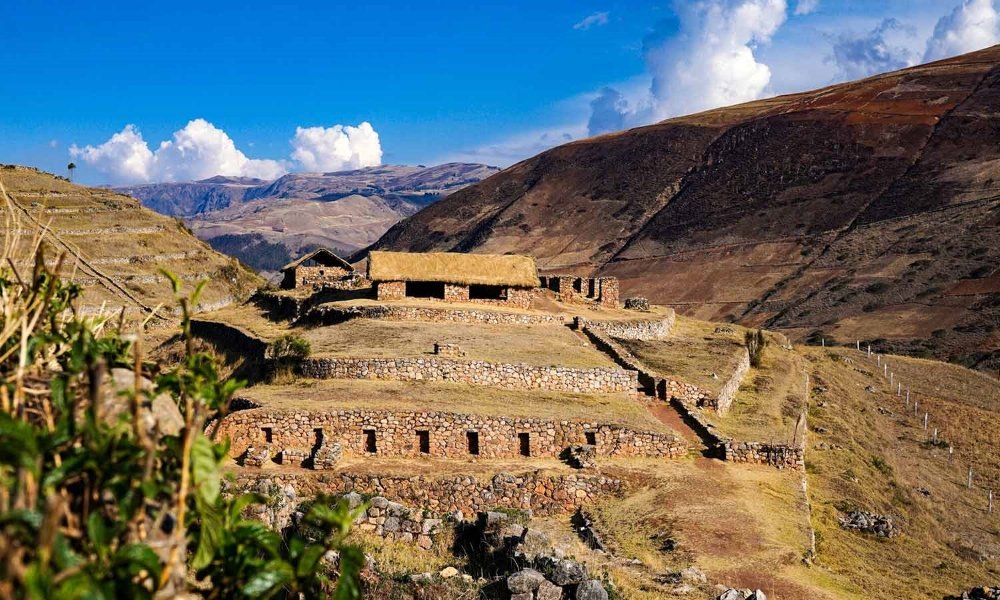Sondor Archaeological Complex | Apurímac
The Sondor Archaeological Complex is an important archaeological site located in the department of Apurimac, Peru. This complex is known for being one of the largest in the region and for housing several architectural structures belonging to the pre-Inca Wari culture.
Sondor is located at an altitude of around 3,200 meters above sea level, in the province of Andahuaylas. The site encompasses a series of agricultural terraces, ceremonial plazas, administrative and residential enclosures, as well as a network of roads and hydraulic systems.
History of the Sondor Archaeological Complex | Apurimac
The Sondor Archaeological Complex, located in Apurimac, Peru, takes us on a fascinating journey through time, revealing the secrets of the pre-Hispanic cultures that inhabited the region. Its history dates back to more than 2,000 years B.C., when the Chanka culture, known for its bravery and organization, erected this imposing ceremonial center.
Origins and peak of the Chanka culture
The Chankas, who inhabited extensive areas of present-day Apurimac, Huancavelica and Ayacucho, stood out for their cultural development and social organization. Their economy was based on agriculture, livestock and trade, which allowed them to reach a high level of prosperity.
Sondor became one of their main ceremonial and administrative centers. Its construction began around the 12th century A.D., and its peak was reached between the 14th and 15th centuries. During this period, the complex housed a large population and was the scene of important religious, political and social events.
Monumental architecture and deep symbolism
The Sondor Archaeological Complex is characterized by its monumental stone architecture, a reflection of the advanced construction techniques of the Chankas. Its walls, carefully carved and assembled without mortar, resist the passage of time as a testimony of their ingenuity and engineering.
Their different structures are not fortuitous, but respond to a profound cosmovision. The staggered platforms, distributed in different levels, represent the connection between the earthly and celestial worlds. At the top of these platforms were the temples, considered the abode of the gods.
A ceremonial and administrative center
Sondor was not only a place of religious worship, but also an important administrative center. Activities such as the following were carried out here:
- Ceremonies: Chankan priests performed rituals and offerings to their gods to give thanks for the crops, ask for protection and promote harmony between the people and nature.
- Social events: Festivities, meetings and events were held that brought the population together to strengthen community ties and reaffirm their cultural identity.
- Political decisions: Authorities met to discuss important matters related to the government, the economy and the defense of the territory.
Decline of the Chanka culture and the arrival of the Incas.
At the end of the 15th century, the Incas began their southward expansion, which led to a confrontation with the Chankas. After fierce resistance, the Chankas were finally defeated around 1440 AD.
The Incas took advantage of the existing infrastructure at Sondor and adapted it to their own purposes. They constructed new buildings and modified some sectors of the complex to align it with their worldview.

An invaluable cultural legacy
The Sondor Archaeological Complex is an archaeological site of great cultural value that allows us to better understand the history and development of the Chanka culture. Its imposing structures, rich symbolism and strategic location give us an idea of the magnitude and complexity of this pre-Hispanic civilization.
Today, Sondor is an important tourist destination that attracts visitors from all over the world. Walking its trails and observing its buildings allows us to connect with the past and reflect on the greatness of the cultures that forged the history of Peru.
How to get to the archaeological complex of Sondor?
To get to the Sondor Archaeological Complex, it is generally recommended to travel first to the city of Andahuaylas, which is the capital of the province of the same name and is located in the department of Apurimac in Peru. From Andahuaylas, there are several options to get to Sondor:
- Public transportation: you can take a bus from the Andahuaylas land terminal to the closest town to the archaeological complex, which is usually the town of Pacucha. From Pacucha, you may need to walk a short distance to the archaeological site.
- Cab or colectivo: You can hire a cab or share a colectivo from Andahuaylas to Pacucha. Once in Pacucha, you can walk to Sondor or ask for local transportation to take you to the site.
- Guided tour: Some local tourist agencies in Andahuaylas offer guided tours to the Sondor Archaeological Complex. These tours usually include transportation from Andahuaylas to the site, as well as the guide of an expert who will provide you with information about the history and importance of the site.
It is important to keep in mind that Sondor is located in a mountainous area and may require moderate hiking or climbing, depending on the specific route you choose. In addition, it is advisable to bring water, sunscreen, insect repellent and appropriate clothing for walking and exploring the archaeological site.

Recommendations for visiting the Sondor Archaeological Complex
If you are planning to visit the Sondor Archaeological Complex, here are some recommendations for you to have a pleasant and enriching experience:
- Do your research before you go
learn about the history and importance of the archaeological site before your visit. This will help you better appreciate what you will see and understand its historical context.
- Dress appropriately
Due to Sondor’s mountainous location, the weather can vary, so be sure to wear comfortable clothing suitable for walking, as well as extra layers in case of sudden temperature changes. It is also advisable to bring a hat, sunglasses and sunscreen to protect you from the sun.
- Bring water and snacks
It is important to stay hydrated during your visit, so bring plenty of water. You can also bring some light snacks to replenish your energy during your tour.
- Proper footwear
Wear comfortable, sturdy walking shoes, as you may need to walk on uneven or steep trails to explore the archaeological complex.
-
Respect rules and regulations
Follow the indications and rules established by local authorities and archaeological site staff. This includes not damaging structures, not leaving trash and respecting restricted areas.
- Listen to the guides
If you decide to take a guided tour, pay attention to the information provided by the guides. They can offer interesting details about the history and architecture of the site.
- Explore with care
When exploring the archaeological complex, be careful not to get too close to fragile structures and follow safety instructions at all times.
- Enjoy the scenery
In addition to the archaeological ruins, Sondor offers breathtaking views of the mountainous landscapes of the Peruvian Andes. Take a moment to enjoy the natural beauty that surrounds the site.
By following these recommendations, you will be able to make the most of your visit to the Sondor Archaeological Complex and take the opportunity to explore this important historical and cultural site.












